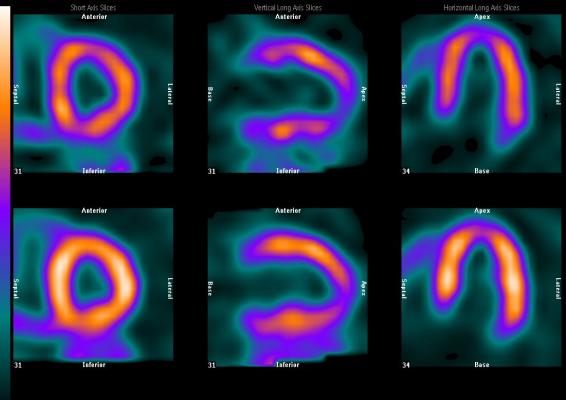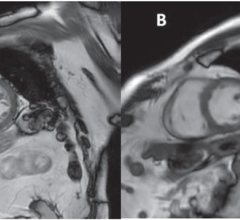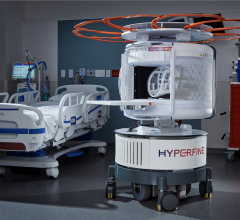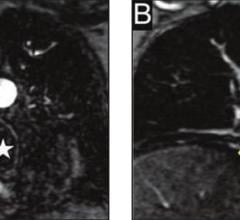
January 5, 2017 — Working in concert, the American Society of Nuclear Cardiology (ASNC), the Intersocietal Accreditation Commission (IAC)’s Nuclear/PET accreditation division and the Society of Nuclear Medicine in Molecular Imaging (SNMMI) are mandating optimized radiation doses in conjunction with the nuclear cardiology studies (i.e., myocardial perfusion imaging) performed throughout the United States and beyond.
These efforts come in response to recently published research[1,2] demonstrating that adherence to clinical nuclear imaging guidelines for reduced patient radiation exposure is variably implemented, resulting in administration of higher doses than necessary for some patients undergoing myocardial perfusion studies.
In February 2016, ASNC published guidelines for myocardial perfusion SPECT imaging, ASNC Imaging Guidelines for SPECT Nuclear Cardiology Procedures: Stress Protocols and Tracers, which include a chart entitled “Current SPECT Myocardial Perfusion Imaging Protocols: Recommended Radiopharmaceutical Activities and Their Corresponding Radiation Effective Doses.” These recommendations provide guidance for practitioners and are based on ASNC’s guiding principle of performing the most appropriate study that provides the highest quality data to aid in medical decision-making and minimizes risks to patients. Dose reduction strategies based on weight-based radiotracer dosing, thoughtful selection of radiotracer, stress-only imaging when appropriate, software innovations, state-of-the-art SPECT systems and utilization of PET for myocardial perfusion imaging are all methods supported by ASNC to achieve quality cardiac imaging at the lowest radiation exposure.
“ASNC is committed to supporting nuclear cardiac imaging labs’ use of the lowest radiotracer dose that maintains diagnostic image quality, in conjunction with application of appropriate use criteria (AUC) and the use of count recovery software for general SPECT cameras, new solid state SPECT cameras, and PET to provide the right test for the right patient,” said Brian G. Abbott, M.D., FACC, MASNC, ASNC president.
To ensure that facilities seeking nuclear cardiology accreditation focus their awareness on the patient dose they are administering, the September 2016 published revision to the IAC Standards and Guidelines for Nuclear/PET Accreditation is inclusive of required administered dose ranges as recommended by the 2016 ASNC guidelines. In accordance with the IAC’s mission of improving healthcare through accreditation®, the IAC Nuclear/PET Board of Directors has made the decision to mandate specific dose ranges for myocardial perfusion imaging studies to decrease radiation exposure while maintaining image quality, thus ensuring patient safety.
“Our ultimate goal is to ensure that nuclear cardiology facilities are guided to administer the lowest dose possible that provides optimal imaging results for patients referred for myocardial perfusion imaging studies,” said Scott D. Jerome, DO, FACC, FASNC, FSCCT, IAC Nuclear/PET president
Speaking on behalf of the SNMMI, President Sally W. Schwarz, MS, RPh, BCNP, stated, “Working together, we can more effectively ensure that health care providers meet accreditation requirements and follow dose guidelines for nuclear cardiology. The goal is to keep radiation exposure as low as is reasonable.”
Frederic H. Fahey, DSc, FSNMMI, who serves on SNMMI’s Dose Optimization Task Force, added, “Accreditation requirements and dosing guidelines emphasize both patient safety and quality images. Our focus must always be on providing the highest quality care in the safest manner possible.”
ASNC is a leader in quality, education, advocacy and standards in cardiovascular imaging, with nearly 4,000 members worldwide. For more information, visit www.asnc.org.
IAC is a nonprofit organization offering accreditation programs for vascular testing, echocardiography, nuclear/PET, MRI, diagnostic CT, dental CT, carotid stenting, vein treatment and management and cardiac electrophysiology. For more information: intersocietal.org.
SNMMI is an international scientific and medical organization dedicated to raising public awareness about nuclear medicine and molecular imaging. SNMMI’s more than 17,000 members set the standard for molecular imaging and nuclear medicine practice by creating guidelines, sharing information through journals and meetings and leading advocacy on key issues that affect molecular imaging. For more information: snmmi.org.
2. Mathew Mercuri; Thomas N. B. Pascual; John J. Mahmarian; Leslee J. Shaw; et al. for the INCAPS Investigators Group. “Comparison of Radiation Doses and Best-Practice Use for Myocardial Perfusion Imaging in US and Non-US Laboratories/ Findings From the IAEA (International Atomic Energy Agency) Nuclear Cardiology Protocols Study.” JAMA Intern Med. 2016;176(2):266-269. doi:10.1001/jamainternmed.2015.7102.)
Read the article "Recent Advances in Cardiac Nuclear Imaging Technology."
Watch the VIDEO "PET vs. SPECT in Nuclear Cardiology and Recent Advances in Technology." An interview with Prem Soman, M.D., director of nuclear cardiology at the Heart and Vascular Institute, University of Pittsburgh, and president-elect of the American Society of Nuclear Cardiology (ASNC), explained advances in PET and SPECT imaging.
Watch the VIDEO "Trends in Nuclear Cardiology Imaging." A discussion with David Wolinsky, M.D., director of nuclear cardiology at Cleveland Clinic Florida and past-president of the American Society of Nuclear Cardiology (ASNC), discusses advancements in nuclear imaging and some of the issues facing the subspecialty.


 March 05, 2024
March 05, 2024 








